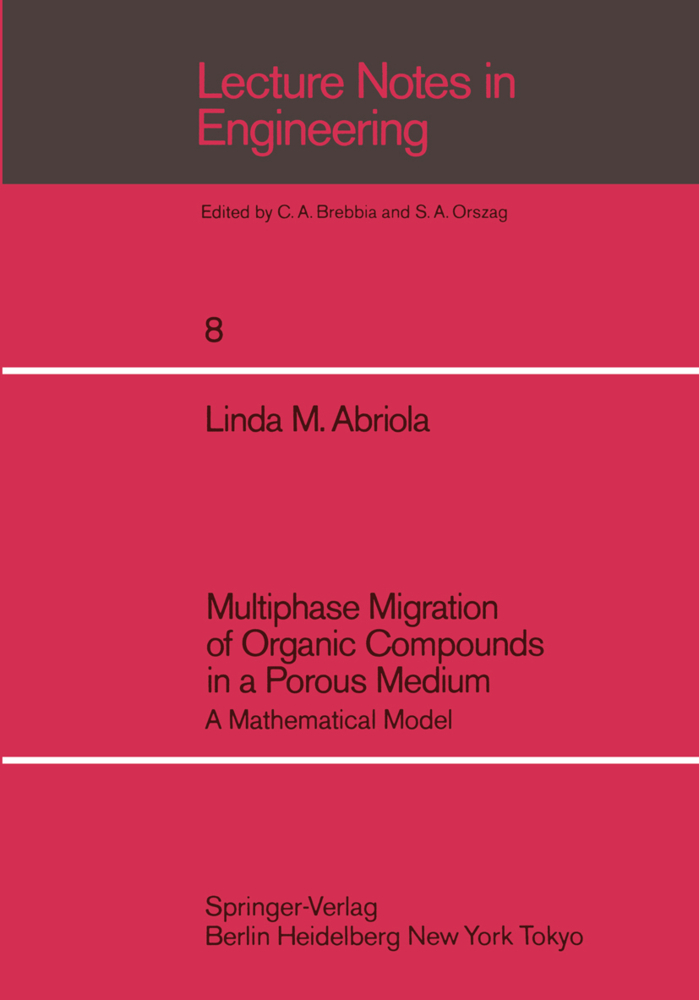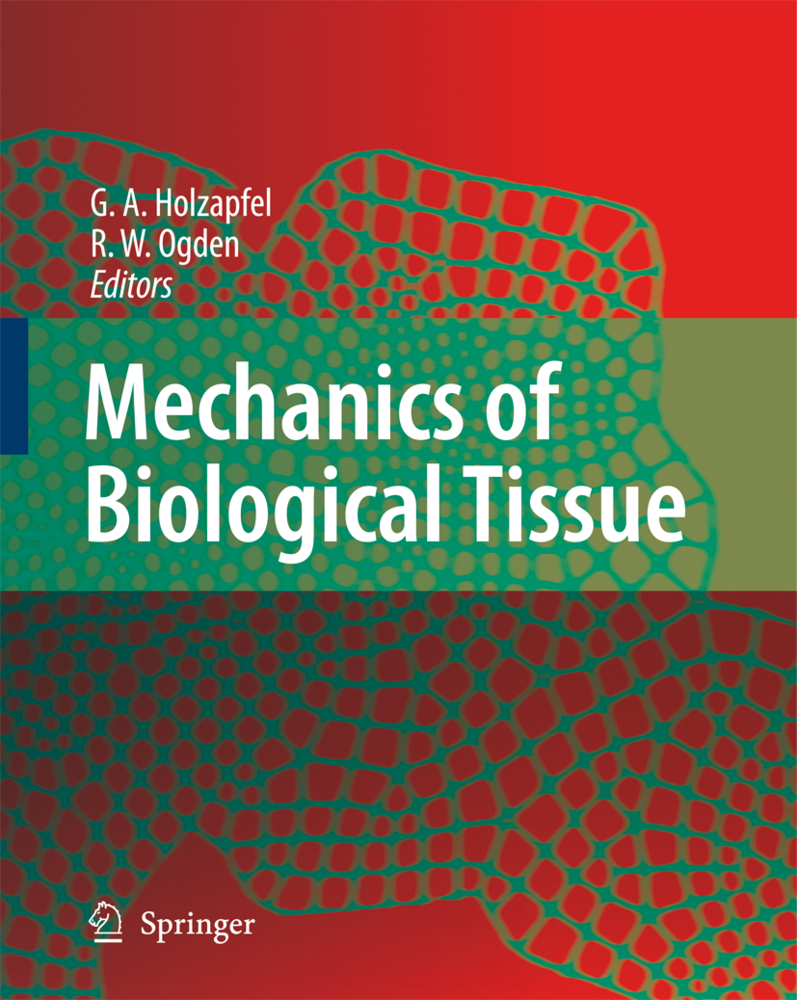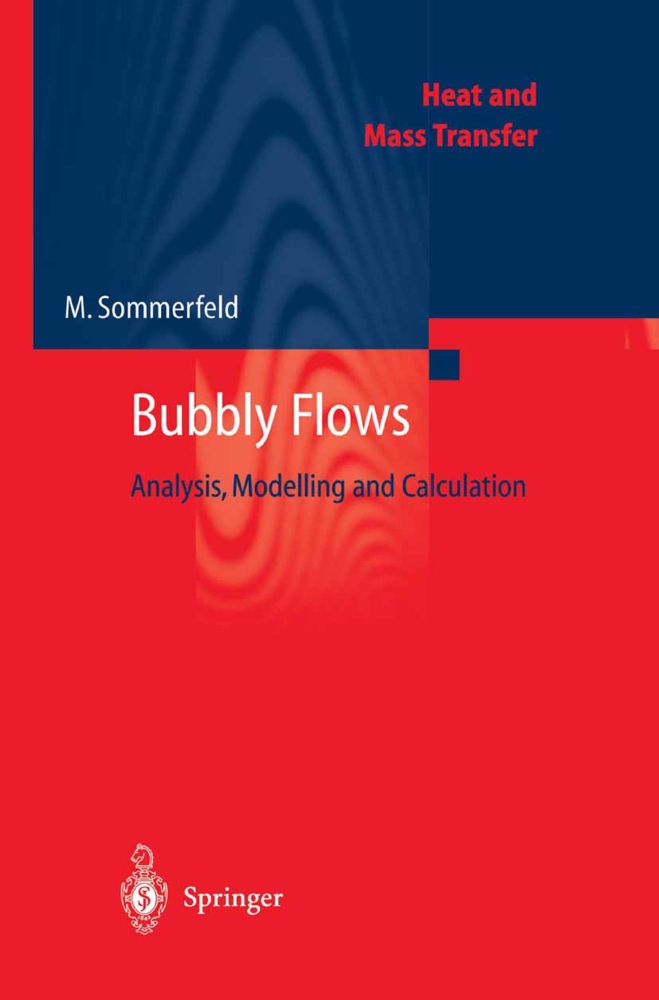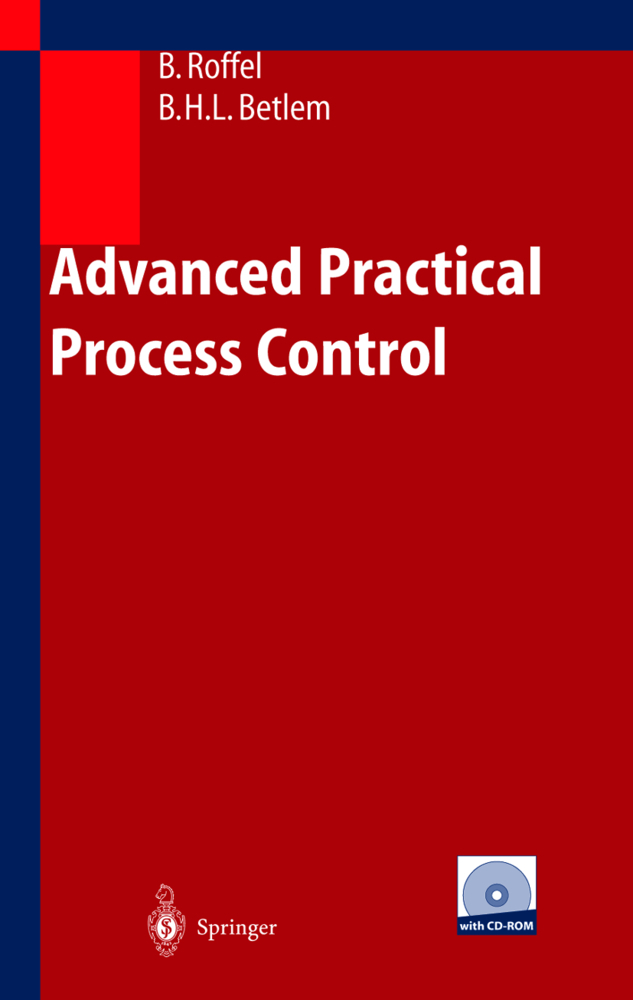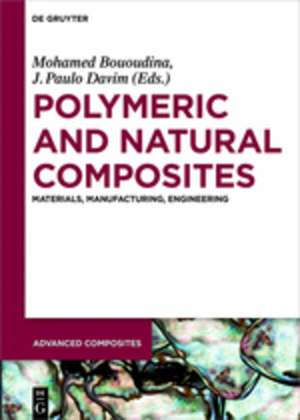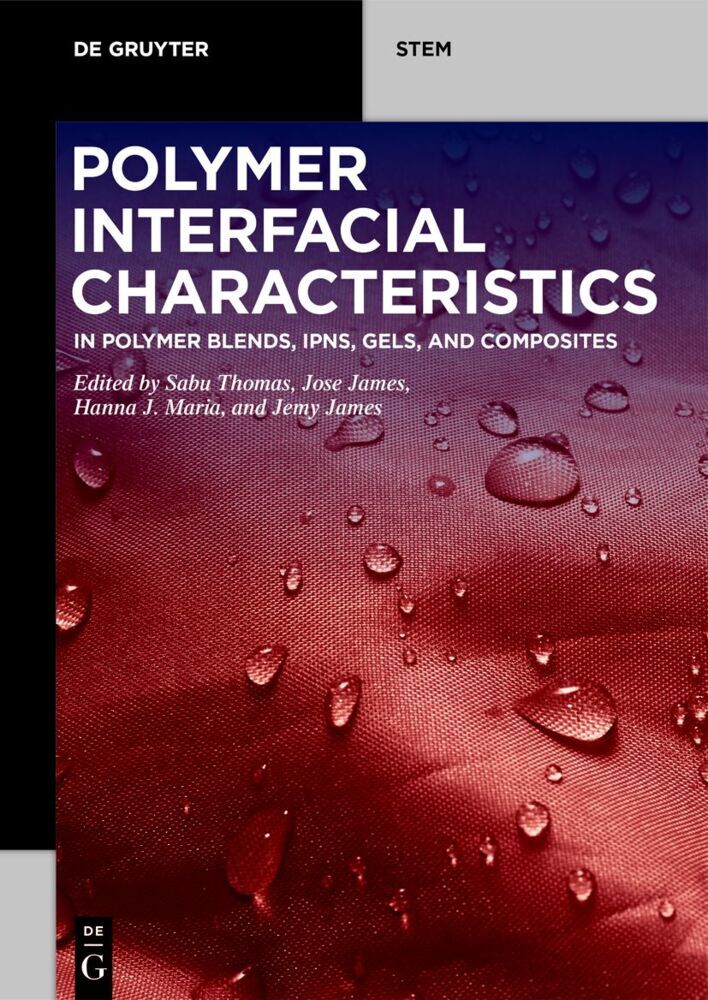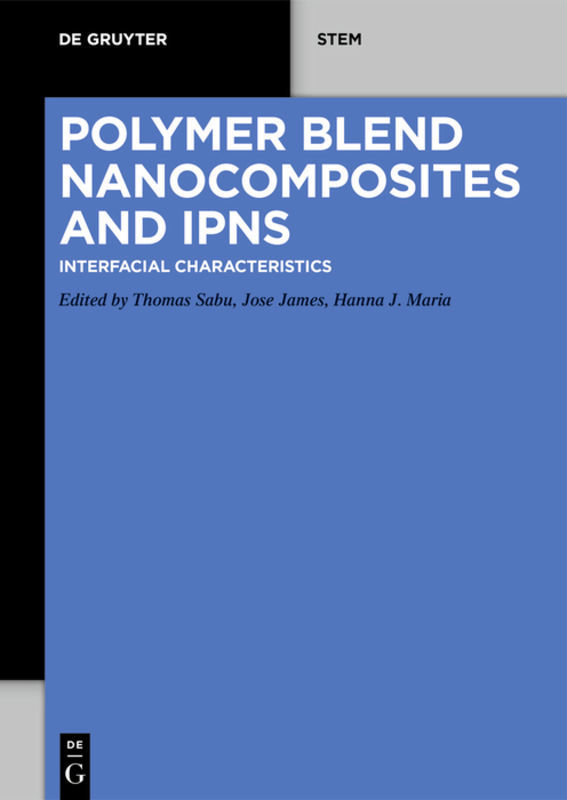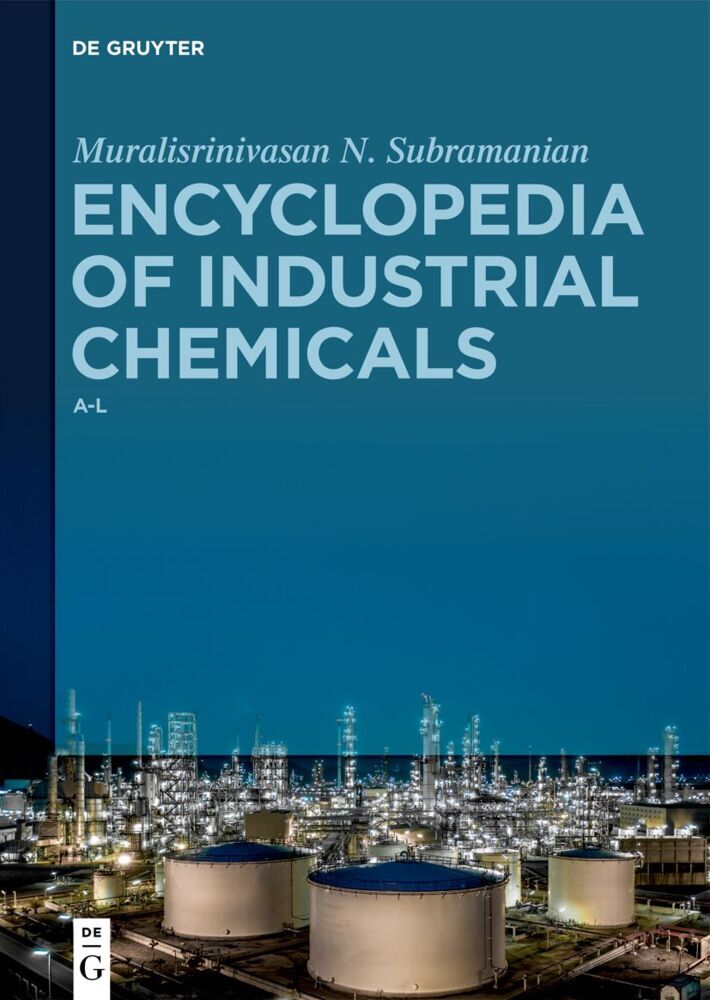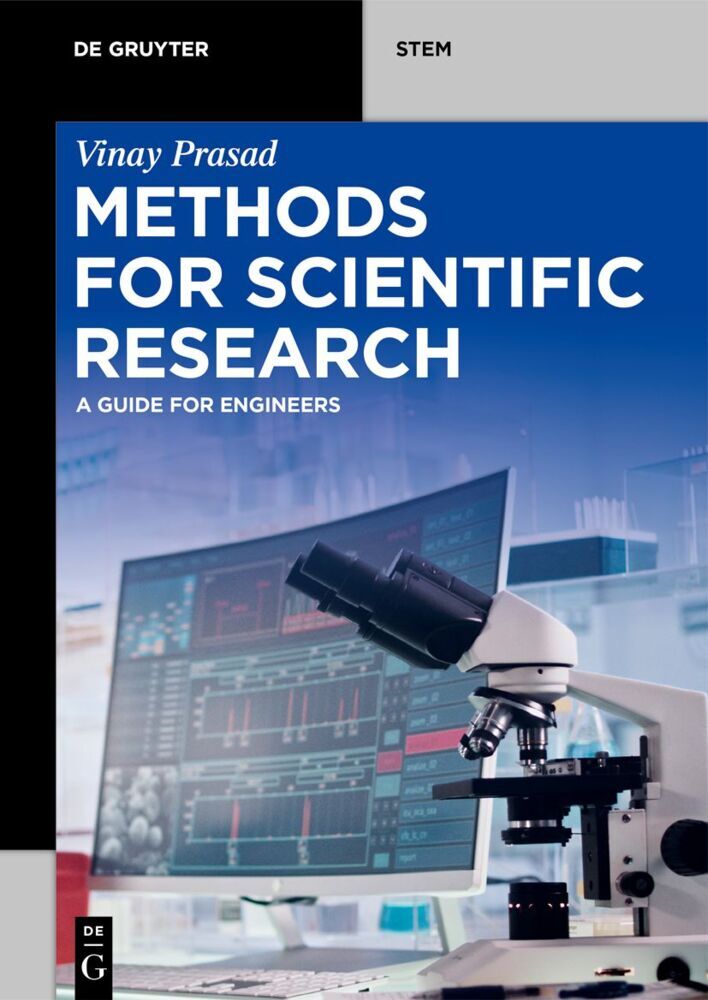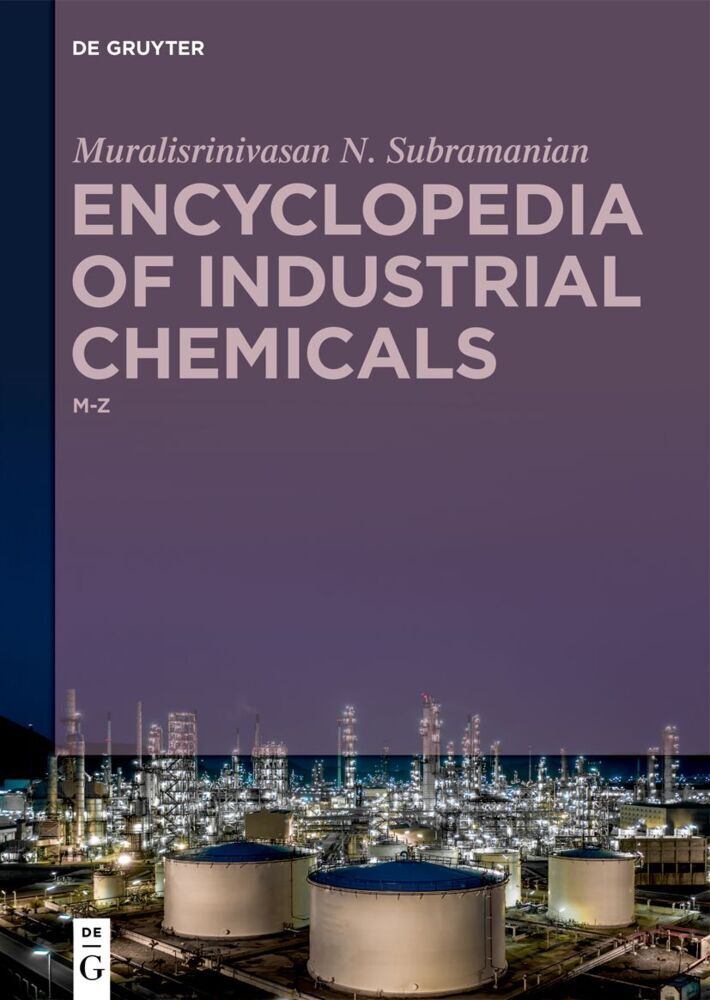Multiphase Migration of Organic Compounds in a Porous Medium
A Mathematical Model
Multiphase Migration of Organic Compounds in a Porous Medium
A Mathematical Model
Groundwater has long been one of the world's most important resources. It accounts for approximately 96% of all fresh water in the United States and supplies more than 50% of the population with potable water. Historically, this water source has generally been regarded as pristine. However, in recent years, contamination of ground water by industrial products has become a problem of growing concern. During the past four decades, the variety and quantity of organic chemicals produced in the U. S. has steadily increased. Currently, more than 40,000 different organic compounds are being manufactured, trans ported, used and eventually disposed of in the environment (Wilson, et !l (1981". Production and consumption of petroleum products has also risen in this same time period. Many of these industrial compounds are highly toxic and slightly water soluble. Thus, they pose a poten tial threat to large volumes of groundwater if they are somehow intro duced into the subsurface. Increased production of chemicals implies the increased risk of accidental spills or leakage to the soil, and indeed, the literature abounds with contamination case histories. 2 Incidences of petroleum contamination of groundwater have been documented by many authors. For example, see: Schwi11e (1967); Toms (1971); Guenther (1972); McKee, et!l (1912); Williams and Wilder (1971); Van100cke, et ~]-
2.1-Presentation of the Balance Laws
2.2-Soil Species Equation
2.3-Water Equation
2.4-Inert Chemical Species Equation
2.5-Air Species Equation
2.6-Species 2 Equation
2.7-Partitioning of Mass
2.8-Equation Summary
III - Development of the 1-D Simulator
3.1-Background
3.2-Formation of the Difference Equations
3.3-Incorporation of Boundary and Initial Conditions
3.4-Evaluation of Coefficients
3.5-Solution of the Nonlinear Matrix Equations
IV - Computer Simulations in One Dimension
4.1-Oil Contamination Simulations
4.2-TCE Simulations
V - The Two-Dimensional Simulator
5.1-Extension to Two Space Dimensions
5.2-Matrix Equation Structure and Solution
5.3-Example Simulations
Summary and Conclusions
References
Appendices
Appendix A - Derivation of the Macroscopic Mass Balance Equation
Appendix B.1 - Properties of the Difference Operator and its Solutions
Appendix B.2 - Analysis of Truncation Terms
Appendix B.3 - The Newton-Raphson Iteration Method
Appendix C.1 - Matrix Coefficients for the 1-D Model
Appendix C.2 - Newton-Raphson Matrix Coefficients for the 1-D Model.
I - Introduction
II - Equation Development2.1-Presentation of the Balance Laws
2.2-Soil Species Equation
2.3-Water Equation
2.4-Inert Chemical Species Equation
2.5-Air Species Equation
2.6-Species 2 Equation
2.7-Partitioning of Mass
2.8-Equation Summary
III - Development of the 1-D Simulator
3.1-Background
3.2-Formation of the Difference Equations
3.3-Incorporation of Boundary and Initial Conditions
3.4-Evaluation of Coefficients
3.5-Solution of the Nonlinear Matrix Equations
IV - Computer Simulations in One Dimension
4.1-Oil Contamination Simulations
4.2-TCE Simulations
V - The Two-Dimensional Simulator
5.1-Extension to Two Space Dimensions
5.2-Matrix Equation Structure and Solution
5.3-Example Simulations
Summary and Conclusions
References
Appendices
Appendix A - Derivation of the Macroscopic Mass Balance Equation
Appendix B.1 - Properties of the Difference Operator and its Solutions
Appendix B.2 - Analysis of Truncation Terms
Appendix B.3 - The Newton-Raphson Iteration Method
Appendix C.1 - Matrix Coefficients for the 1-D Model
Appendix C.2 - Newton-Raphson Matrix Coefficients for the 1-D Model.
Abriola, Linda M.
| ISBN | 978-3-540-13694-1 |
|---|---|
| Artikelnummer | 9783540136941 |
| Medientyp | Buch |
| Auflage | Softcover reprint of the original 1st ed. 1984 |
| Copyrightjahr | 1984 |
| Verlag | Springer, Berlin |
| Umfang | X, 234 Seiten |
| Abbildungen | X, 234 p. 3 illus. |
| Sprache | Englisch |

